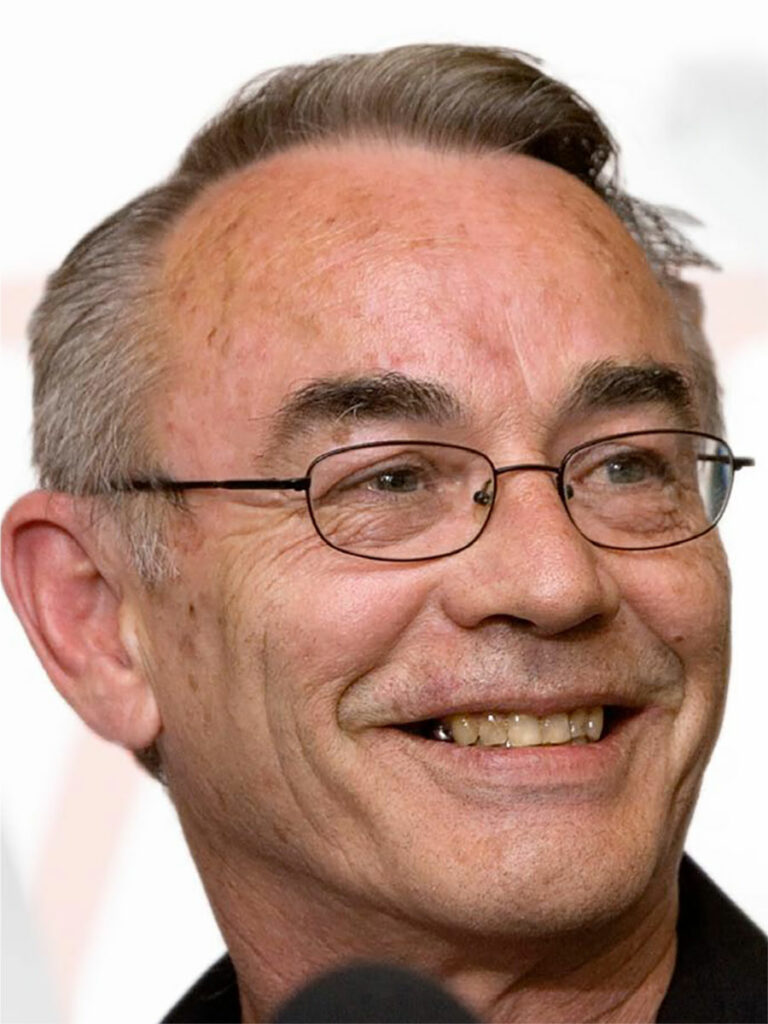Steven Truscott
Author: Sarah Harland-Logan
Introduction
In 1959, Steven Truscott was only fourteen years old when he was charged with the murder of his classmate Lynne Harper. After his wrongful conviction, Steven spent nearly 50 years seeking justice before he was acquitted by the Ontario Court of Appeal in 2007.[1]
On the evening of June 9, 1959, Steven was seen giving Lynne a ride on his bicycle. They parted ways. Later that evening, her father reported her missing. Two days later, Lynne’s body was found in a nearby wooded area. She had been sexually assaulted and strangled to death. On June 13, 1959, Steven was charged with Lynne’s murder.[2]
Steven’s Trial
Despite his young age, Steven was ordered to stand trial as an adult. The Crown’s theory was that rather than dropping Lynne off as he claimed to have done, Steven turned off into the bush and killed Lynne at some point between 7:00 p.m. and 7:45 p.m. that evening. This theory was supported by conflicting testimony from various witnesses (some of whom claimed to have seen Steven near the area where Lynne’s body was found), testimony from the autopsy doctor – Dr. John Penistan – that Lynne had died sometime within this window, and lesions on Steven’s penis which, it was argued, could have been sustained by sexually assaulting Lynne.[3]
Steven insisted throughout the proceedings that he was innocent. He testified that Lynne was unharmed when he dropped her off at the intersection of the County Road and Highway 8, and that he happened to stop his bike on a bridge and looked back in her direction, only to see her getting into a grey Chevy with a yellow license plate. Several witnesses supported Steven’s version of events, testifying that they had indeed seen Steven and Lynne riding toward the intersection where Steven said he had dropped her off, or that they had seen him standing on the bridge looking in her direction. Witnesses also noted that Steven seemed normal when they saw him on the school grounds at 8 p.m. that evening. No one had seen Steven entering or leaving the wooded area where Lynne was killed.[4]
The defence led evidence from a specialist in internal medicine who testified that the method that the Crown expert used to determine Lynne’s time of death – examination of stomach contents – was not reliable, and that the lesions on Steven’s penis were most likely not caused by sexual intercourse.[5]
Despite defence efforts, on September 30, 1959, the jury found Steven guilty, and recommended that he be sentenced mercifully. At that time, however, the Criminal Code required that a death sentence be imposed for murder. The trial judge sentenced fourteen-year-old Steven to death by hanging.
No Appeals Allowed
Steven appealed his conviction to the Ontario Court of Appeal, but the Court unanimously dismissed his appeal on January 20, 1960. He then applied to the Supreme Court of Canada for leave to appeal his conviction. On February 24 of the same year, that court also dismissed his application for leave to appeal.[6]
At that point, Steven was out of legal options. Fortunately, the Governor General had ordered that his death sentence be commuted to a sentence of life imprisonment. Steven was therefore able to continue fighting for justice for several decades, rather than being executed for a crime he did not commit.[7]
Six years later, author Isabel LeBourdais published a book entitled The Trial of Steven Truscott, which was highly critical of the police investigation and trial process that had led to Steven’s conviction. The book brought Steven’s case to the attention of the public and, in 1966, the Governor General requested that the Supreme Court determine whether or not it would have upheld Steven’s conviction if it had allowed him to appeal the trial court’s decision. On May 4, 1967, the Court concluded that it would have dismissed the appeal. Again, it seemed that Steven was out of legal options.[8]
Steven’s Incarceration and Life in the Community
Steven remained incarcerated – first at the Ontario Training School for Boys in Guelph, and then, after turning eighteen, at the Collins Bay Penitentiary, in Kingston – until October 21, 1969. At that point, he had been in prison for ten years and was eligible to be released on parole. After his release at age 24, Steven moved to Guelph, changed his name, and worked as a millwright, a trade that he had learned in prison. In October 1970, he married his wife, Marlene, and they raised three children. He has never been charged with any other criminal offence.[9]
Fresh Evidence Presented to the Court of Appeal
Innocence Canada (formerly AIDWYC) first became involved in Steven’s case in 1997 when Innocence Canada Counsel, along with journalists from CBC’s the fifth estate, travelled to Steven and Marlene’s home in Guelph. Steven quickly gave instructions to commence a search for evidence that would establish his innocence once and for all.[10]
In 2001 – thirty years after Steven’s release from prison – Innocence Canada prepared and submitted an Application for Ministerial Review of his conviction under what was then section 690 of the Criminal Code. As a result of this application, in 2002, the federal Minister of Justice retained Mr. Justice Fred Kaufman, a retired Justice of the Quebec Court of Appeal, to investigate the conviction.[11]
In April of 2004, Mr. Kaufman released his investigative report to the Minister of Justice. He had found that there was “clearly a reasonable basis for concluding that a miscarriage of justice … likely occurred.” In light of this alarming finding, the Minister of Justice referred the case back to the Court of Appeal, the same Court which had refused to hear Steven’s appeal 1960.[12]
In June and July 2006, a five-judge panel of the Court of Appeal conducted a three-week hearing where Steven and his Innocence Canada Counsel – James Lockyer, Philip Campbell, Marlys Edwardh, Hersh Wolch and Jenny Friedland – called the fresh evidence that they believed would acquit him of Lynne’s murder. They called several experts to testify that the lesions on Steven’s penis were not caused by sexual intercourse with a young girl. Importantly, several medical experts gave testimony regarding the significant advancements that had occurred in scientific knowledge of the gastric emptying process (i.e., how quickly food is broken down in the stomach) between the time of Steven’s trial in 1959 and the appeal 2006. These experts testified that at the time of Steven’s trial, the field was still “in its infancy,” whereas by 2006, scientists were aware that the rate at which stomachs empty varies widely and depends on a large number of factors (e.g., age, gender, diet, and stress level).[13]
One of the experts, Dr. Michael Pollanen, examined the notes taken at Lynne’s autopsy as well as the slides containing samples of her preserved organs and tissues. Dr. Pollanen found that there was much less evidence of decomposition than he would have expected if Lynne’s time of death was really between 7:00 p.m. and 7:45 p.m. on June 9, 1959 (i.e., two days before her autopsy). He concluded that Lynne had probably died sometime on June 10th – when Steven could not possibly have killed her.[14]
Even more troubling, the Court of Appeal was provided with two unofficial versions of Lynne’s autopsy report that had not been made available to the jurors during Steven’s trial. One of these versions appears to have been the original version that was drafted during the autopsy. In this document, Dr. John Penistan expressed the opinion that Lynne’s body was found “about 40 hours after death” – which would mean that Lynne had died at about 12:45 a.m. on the morning of June 10th. Steven had an unchallenged alibi for this time period. The other unofficial version of the autopsy report gives Lynne’s time of death as between 4:45 a.m. and 10:45 a.m. on June 10th. In other words, if Lynne’s death occurred during either of the timeframes that Dr. Penistan had originally noted, then Steven could not have been her killer.
In 1966, Dr. Penistan had submitted a review of his autopsy findings – which he described as an “agonizing reappraisal” – for the Supreme Court reference regarding Steven’s conviction. This document was not disclosed to defence counsel or to the Supreme Court at the reference. Had they been privy to Dr. Penistan’s review they would have learned that the Doctor concluded in 1966 that his findings were “not incompatible” with a later time of death than the definitive time window that he had given on the stand at Steven’s trial in 1959.[15]
A Miscarriage of Justice
Following the hearing in 2006, the Court of Appeal concluded that if defence counsel had known about the uncertainty of the medical evidence surrounding Lynne’s time of death, as well as the many times that Dr. Penistan changed his opinion in this regard, they would have cross-examined him on his conflicting opinions. Perhaps he would then have retracted his opinion that Lynne died during the time window that supported the Crown’s theory that Steven had killed her. The Court found that given “the nature of the changes” in Dr. Penistan’s opinion about Lynne’s time of death, his evidence was “reasonably open to the allegation that his opinion shifted to coincide with the Crown’s case.” [16] In other words, it is possible that he testified to help the Crown get a conviction, instead of helping the Court to find the truth.
The Court of Appeal concluded that this fresh evidence could reasonably be expected to have affected the jury’s verdict. In light of this fresh evidence, Steven’s conviction was clearly a miscarriage of justice. On August 28, 2007, the Court of Appeal finally quashed his conviction, which had been in place for over 45 years, and entered an acquittal.[17] Soon afterward, the Attorney General for Ontario apologized to Steven.[18]
In 2008, the Ontario government – recognizing that Steven had not only spent a decade in prison for a crime he did not commit, but had also spent nearly half a century as an innocent man stigmatized as a rapist and murderer – awarded Steven $6.5 million in compensation for this egregious miscarriage of justice.[19]
The Causes of Steven’s Wrongful Conviction
As in most wrongful conviction cases, several factors contributed to Steven’s wrongful conviction. First, the Crown’s failure to disclose the unofficial versions of Dr. Penistan’s autopsy report in 1959, caused the defence counsel and jury members to miss crucial exonerating information. Second, the Crown’s failure to disclose Dr. Penistan’s “agonizing reappraisal” in 1966, similarly played a role in frustrating a much earlier attempt to overturn Steven’s wrongful conviction.[20] The Supreme Court has since helped to prevent potential miscarriages of justice caused by a lack of disclosure, by setting out guidelines in the 1991 case R v Stinchcombe [1991] 3 SCR 326, clarifying that the Crown must disclose any and all relevant documents to the defence (except for a few types of privileged materials).
A third factor leading to Steven’s wrongful conviction was the limited scientific knowledge available at the time. Scientific advancements in the intervening 45 years – most notably, a deeper understanding of the numerous factors that could affect the rate at which the stomach empties – shed light on problems with the Crown’s case that were not evident at the time of Steven’s trial. It is important to remember that Steven was originally sentenced to death, and he would have been executed many years before these scientific advancements had taken place. One of many reasons that Innocence Canada does not support the death penalty is that new scientific and technological developments have often played a key role in exonerating innocent people many years after they were imprisoned, as in Steven’s case.[21]
A fourth factor in the wrongful conviction was that Dr. Penistan may have lost sight of his duty to play a dispassionate role in the court process, and help the trier of fact to seek the truth. His many shifting opinions about the time of Lynne’s death suggest that he was so eager to convict Steven for this horrific crime that he allowed his medical judgment to be affected.
Another factor leading to Steven’s wrongful conviction might have been that police and prosecutors focused too early on Steven as the only suspect in Lynne’s murder; this phenomenon is known as “tunnel vision.” The Court of Appeal did not decide whether or not Steven was unfairly targeted in this way. The Court did comment, however, that Steven’s lawyers had argued that tunnel vision negatively affected his case. The Court also stated that “it is true … that police ‘tunnel vision’ is a feature found in many miscarriages of justice.”[22]
Wounds that Innocence Canada Cannot Heal
The Court of Appeal commented that Steven had spent “his entire adult life in the shadow” of his wrongful conviction.[23] In response to Steven being awarded $6.5 million in compensation, the Truscotts issued a statement explaining, “Although we are grateful for the freedom and stability this award will provide, we are also painfully aware that no amount of money could ever truly compensate Steven for the terror of being sentenced to hang at the age of 14, the loss of his youth or the stigma of living for almost 50 years as a convicted murderer.”[24] It is extremely fortunate, and worthy of admiration, that Steven has been able to rebuild his life and start a family but the Truscotts will likely never be able to step out fully from the long, dark shadow of Steven’s wrongful conviction.
[1] “Steven Truscott to get $6.5M for wrongful conviction: Sentenced to hang at age 14 for murdering classmate” CBC News (07 July 2008), online: CBC News Canada http://www.cbc.ca/news/canada/steven-truscott-to-get-6-5m-for-wrongful-conviction-1.742381.
[2] Truscott (Re), 2007 ONCA 575, 225 CCC (3d) 321.
[3] Ibid.
[4] Ibid.
[5] Ibid.
[6] Jay Makarenko, “Truscott Case: Background” Maple Leaf Web, online: http://www.mapleleafweb.com/old/education/spotlight/issue_59/background.html.
[7] Supra note 2.
[8] Ibid.
[9] Supra note 6.
[10] R v Steven Truscott, 2007 ONCA 575 (Factum of the Appellant at para 14).
[11] Ibid at paras 15-18.
[12] Supra note 2.
[13] Ibid.
[14] Ibid.
[15] Ibid.
[16] Ibid.
[17] Ibid.
[18] Supra note 1.
[19] Ibid.
[20] Supra note 2.
[21] Ibid.
[22] Ibid.
[23] Ibid.
[24] Supra note 1.


